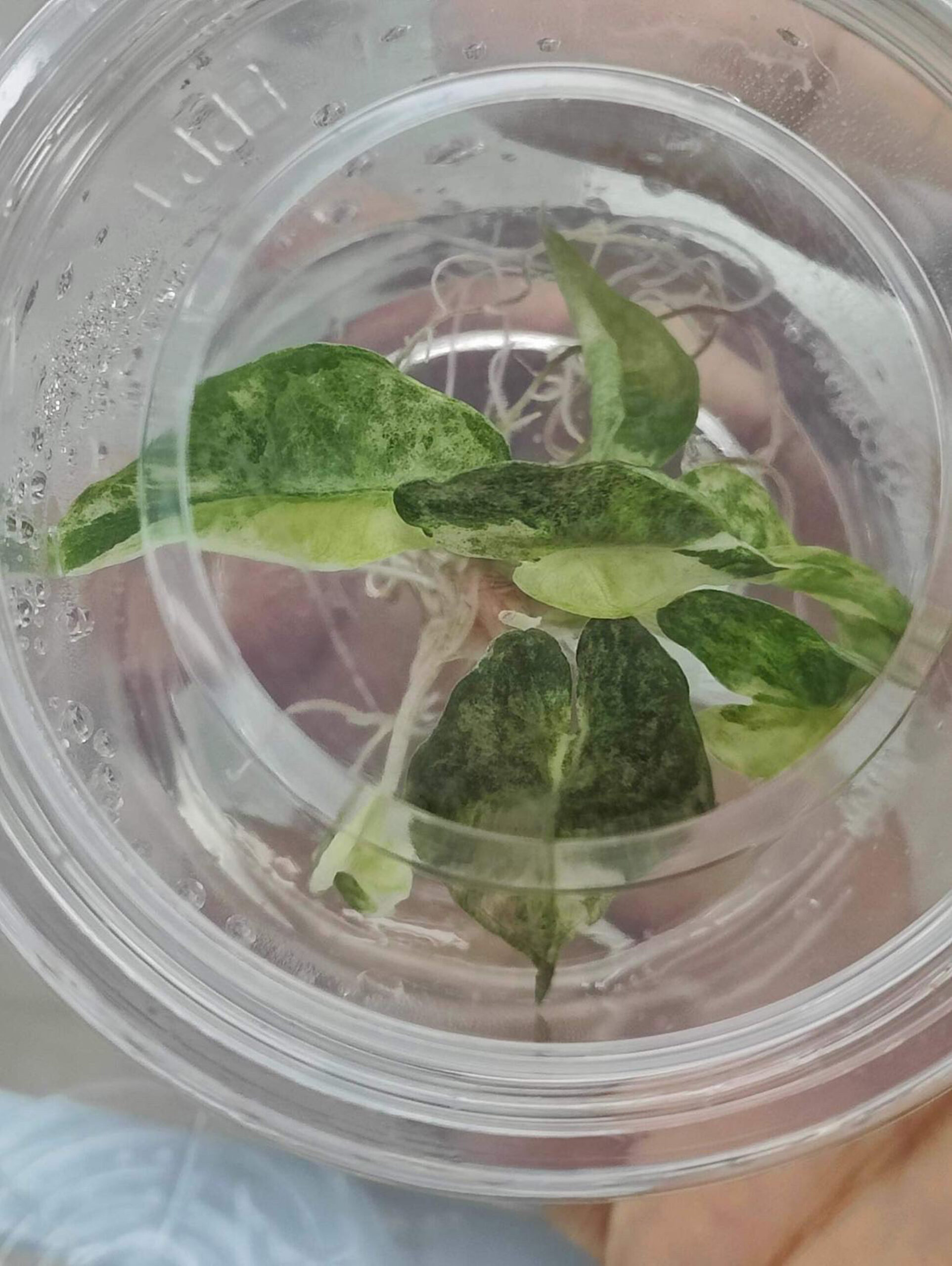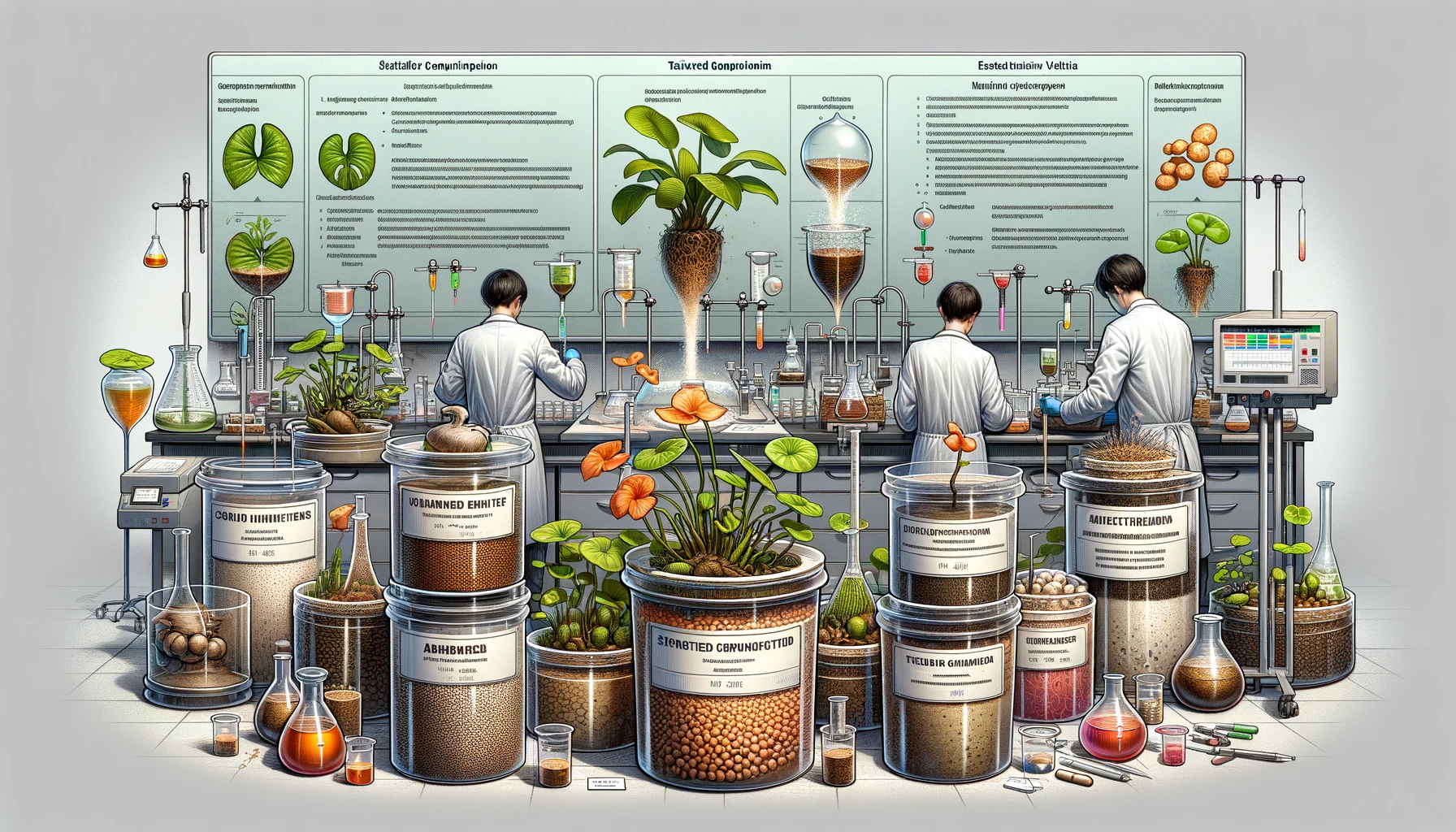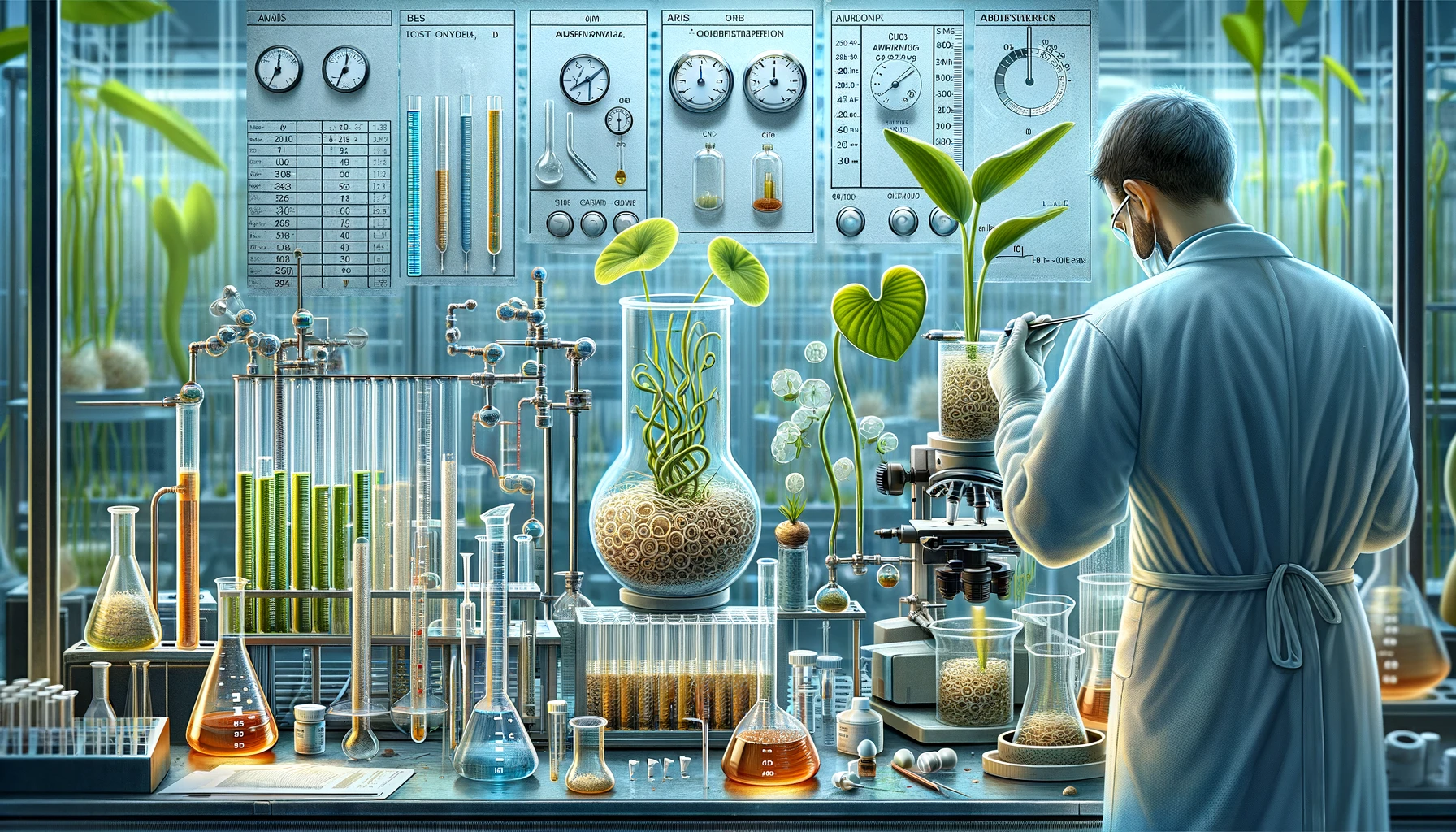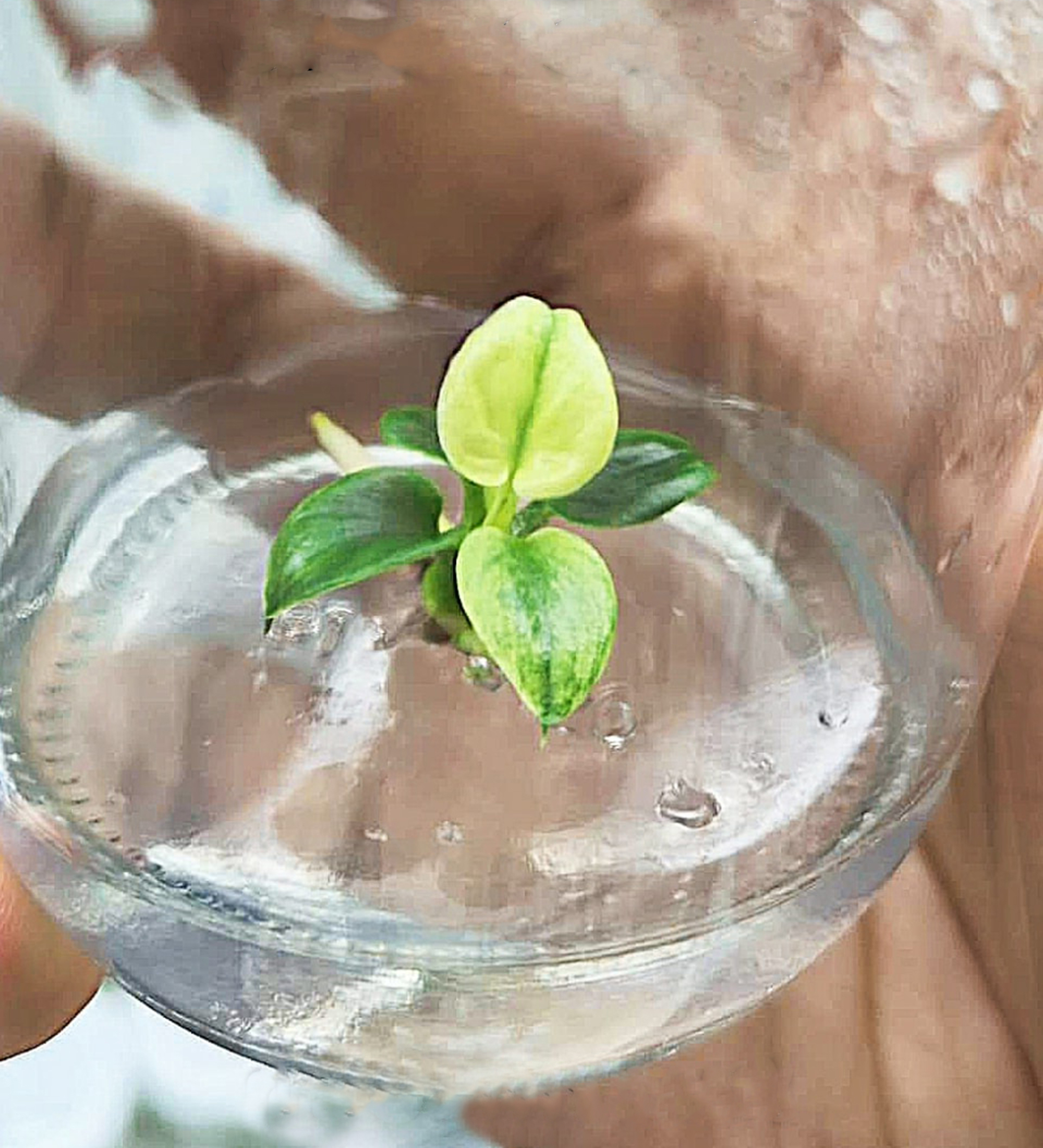Aroids, with their diverse and captivating foliage, have captivated plant enthusiasts for centuries. These enchanting plants, encompassing species like Anthurium, Philodendron, Alocasia and Monstera, exhibit an astonishing array of shapes, sizes, and textures, making them a coveted addition to any collection. However, the propagation of aroids through traditional methods can be a challenging and time-consuming endeavor. Enter tissue culture, a revolutionary technique that harnesses the power of plant cells to generate an abundance of new plants, identical to the parent plant, with unparalleled efficiency. This article delves into the intricate world of aroid tissue culture, focusing on the vital roles of growth media and plant hormones.

Types of Growth Media
Tissue culture relies on providing plant cells with a tailored environment that promotes optimal growth and development. Specialized growth media, carefully formulated to meet the specific needs of aroid plants, play a crucial role in this process. These media provide essential nutrients, vitamins, and sugars, mimicking the conditions found in the native environment.

Macronutrients and Micronutrients
Just like humans, plants require a balanced diet of essential nutrients to thrive. Macronutrients, such as nitrogen (N), phosphorus (P), and potassium (K), are needed in larger quantities and play vital roles in plant growth and development. Micronutrients, including boron (B), copper (Cu), iron (Fe), and zinc (Zn), are required in smaller amounts but are equally important for various physiological processes.
In the context of aroid tissue culture, the growth medium must be carefully formulated to provide the optimal balance of these essential nutrients. Macronutrients like nitrogen, phosphorus, and potassium are crucial for promoting cell division, root development, and overall plant vigor. Micronutrients, on the other hand, are responsible for enzyme activation, chlorophyll production, and the maintenance of cellular integrity.
Organic Supplements
In addition to the inorganic salts that make up the backbone of the growth medium, organic supplements can also play a vital role in aroid tissue culture. These supplements, such as amino acids, vitamins, and plant extracts, can provide additional nutrients and growth-promoting compounds that enhance the development and differentiation of aroid tissues.
For example, the addition of amino acids like glutamine or glycine can stimulate cell division and promote the synthesis of proteins, essential for rapid growth. Vitamins, such as vitamin B1 (thiamine) and vitamin C (ascorbic acid), can act as cofactors for various enzymatic reactions, supporting overall plant health and vigor.
Gelling Agents
To provide a solid substrate for the growth and development of aroid tissues, the growth medium often incorporates gelling agents, such as agar or gellan gum. These agents solidify the medium, creating a semi-solid or gel-like consistency that allows the plant tissues to anchor and grow. The choice of gelling agent can have a significant impact on the texture and consistency of the medium, as well as the ease of handling and manipulating the cultured tissues.
pH Regulation
The pH of the growth medium is another critical factor in aroid tissue culture. Aroids, like many plants, thrive best in a slightly acidic to neutral pH range, typically between 5.5 and 6.5. This pH range helps optimize the availability and uptake of essential nutrients, as well as maintain the appropriate balance of charged ions within the medium.
Maintaining the correct pH is essential for ensuring optimal growth and minimizing the risk of nutrient deficiencies or toxicities. Careful monitoring and adjustment of the medium’s pH, either through the addition of acidic or alkaline compounds, is a vital step in the tissue culture process.
Role of Plant Hormones in Tissue Culture
Plant hormones, also known as phytohormones, are chemical signaling molecules that play a crucial role in the regulation of various physiological processes in aroid tissue culture. These hormones, produced naturally by plants, act as chemical messengers, triggering and coordinating the growth, development, and differentiation of plant tissues.

Auxins
Auxins are a class of plant hormones that are particularly important in aroid tissue culture. They are responsible for a wide range of functions, including cell elongation, root initiation, and apical dominance. In the context of tissue culture, auxins like indole-3-acetic acid (IAA), indole-3-butyric acid (IBA), and 2,4-dichlorophenoxyacetic acid (2,4-D) are commonly used to stimulate root formation, promote callus (undifferentiated cell mass) induction, and regulate the overall growth and development of aroid tissues.
Cytokinins
Cytokinins are another essential group of plant hormones in aroid tissue culture. They are primarily responsible for cell division, shoot formation, and the regulation of apical dominance. Commonly used cytokinins in aroid tissue culture include 6-benzylaminopurine (BAP), kinetin, and zeatin. These hormones can be used to encourage the proliferation of shoot buds, enhance axillary bud break, and promote the development of healthy, well-differentiated shoots.
Gibberellins
Gibberellins are plant hormones that play a role in stem elongation, seed germination, and the regulation of flowering. In aroid tissue culture, gibberellins like gibberellic acid (GA3) can be used to overcome dormancy, stimulate internode elongation, and promote the transition from the vegetative to the reproductive stage.
Ethylene
Ethylene is a unique plant hormone that acts as a gaseous signaling molecule. In aroid tissue culture, ethylene can have both positive and negative effects, depending on the concentration and the stage of plant development. At low levels, ethylene can promote root initiation and enhance shoot elongation, while at higher levels, it can inhibit shoot formation and cause undesirable effects like leaf abscission.
Abscisic Acid (ABA)
Abscisic acid (ABA) is a plant hormone that plays a role in stress responses, dormancy, and the regulation of stomatal opening and closing. In aroid tissue culture, ABA can be used to promote the formation of somatic embryos, enhance abiotic stress tolerance, and regulate the transition from the in vitro to the ex vitro environment.
Synergistic Effects of Hormones
The effects of plant hormones in aroid tissue culture are often synergistic, with different hormones working together to produce a desired outcome. For example, the combination of auxins and cytokinins can be used to control the balance between root and shoot development, allowing for the efficient propagation of aroid plants. The precise ratios and concentrations of these hormones must be carefully optimized to achieve the desired results.
Optimizing Hormone Concentrations
Achieving the optimal balance of plant hormones is a critical aspect of successful aroid tissue culture. The concentrations and ratios of these hormones can have a profound impact on the growth, development, and morphogenesis of the cultured aroid tissues.

Auxin-Cytokinin Ratio
One of the most fundamental relationships in plant tissue culture is the balance between auxins and cytokinins. This ratio is often referred to as the “organogenic ratio” and can be used to manipulate the development of roots, shoots, and callus in aroid cultures.
Generally, a higher auxin-to-cytokinin ratio favors root formation, while a higher cytokinin-to-auxin ratio promotes shoot development. The specific ratios required may vary depending on the aroid species, the explant type, and the desired outcome.
Concentration Optimization
In addition to the auxin-cytokinin ratio, the absolute concentrations of these hormones must also be optimized. Concentrations that are too low may result in suboptimal growth and development, while concentrations that are too high can lead to undesirable effects, such as hyperhydricity (abnormal water content) or callus proliferation.
Careful experimentation and testing are often required to determine the optimal hormone concentrations for a specific aroid species or cultivar. This may involve a series of trials with varying hormone levels to identify the sweet spot that promotes the most efficient and healthy tissue culture.
Synergistic Hormone Interactions
As mentioned earlier, the effects of plant hormones in aroid tissue culture are often synergistic, with different hormones working together to achieve a desired outcome. For example, the addition of gibberellins can enhance the effects of auxins and cytokinins, leading to improved shoot elongation and root development.
Exploring the synergistic interactions between various plant hormones can be a valuable approach in optimizing aroid tissue culture protocols. By carefully balancing the concentrations and ratios of different hormones, researchers and growers can unlock the full potential of aroid tissue culture, leading to more efficient and reliable propagation.
Conclusion
The art and science of aroid tissue culture are a captivating intersection of plant biology, biochemistry, and horticultural expertise. By understanding the crucial roles of growth media and plant hormones, growers and researchers can unlock the true potential of these enchanting plants, propagating them with unparalleled efficiency and precision.
From the careful formulation of nutrient-rich growth media to the delicate balancing of plant hormones, the world of aroid tissue culture is a testament to the power of scientific investigation and the ingenuity of plant enthusiasts. As the demand for these captivating aroids continues to grow, the advancements in tissue culture techniques will undoubtedly play a vital role in ensuring a sustainable supply and the preservation of these natural wonders.
By mastering the intricacies of aroid tissue culture, we not only expand our understanding of plant biology but also cultivate a future where the beauty and diversity of aroids can be enjoyed by plant lovers across the globe. This journey of discovery, rooted in both art and science, is a testament to the enduring fascination and reverence we hold for the natural world.
FAQs
- What is the most common basal medium used for aroid tissue culture?
Murashige and Skoog (MS) medium is the most widely used basal medium for aroid tissue culture. It provides the necessary nutrients for plant growth and development. However, modifications might be required based on the specific aroid species and the desired outcome of the culture.
- What are the typical plant growth regulators (PGRs) used in aroid tissue culture?
The most common PGRs used in aroid tissue culture are:
- Cytokinins: Promote shoot formation and multiplication. Common cytokinins include 6-benzylaminopurine (BAP), kinetin, and thidiazuron (TDZ).
- Auxins: Induce root formation and callus development. Common auxins include indole-3-acetic acid (IAA), naphthaleneacetic acid (NAA), and indole-3-butyric acid (IBA).
The specific type and concentration of PGRs will depend on the desired outcome of the culture (e.g., shoot multiplication, root induction, callus formation) and the specific aroid species.
- Can I use a combination of PGRs in the medium?
Yes, using a combination of cytokinins and auxins is often necessary to achieve the desired response in aroid tissue culture. For example, a combination of BAP and NAA is often used for shoot multiplication, while a higher concentration of auxin is used for root induction.
- Are there any other supplements added to the medium?
Besides PGRs, other supplements like activated charcoal, vitamins, amino acids, and coconut water can be added to enhance the growth and development of aroid cultures. Activated charcoal helps absorb toxic compounds, while vitamins and amino acids provide additional nutrients. Coconut water contains natural growth factors that promote cell division.
- Do I need to adjust the medium for different stages of tissue culture?
Yes, it is often necessary to use different media formulations for different stages of tissue culture. For example, a medium with a higher cytokinin-to-auxin ratio might be used for shoot multiplication, while a medium with a higher auxin concentration might be used for root induction.
Ready to Dive into the World of Tissue Culture Aroids? Explore our curated collection of Tissue Culture Aroid Plants at Greenboog, where we’ve harnessed the power of science to bring you the most sought-after and rare varieties. From the vibrant variegation of Philodendrons to the striking foliage of Monsteras, our tissue-cultured plants are disease-free, robust, and ready to thrive in your collection. Discover the future of plant propagation and elevate your indoor jungle with Greenboog’s Tissue Culture Aroids.


